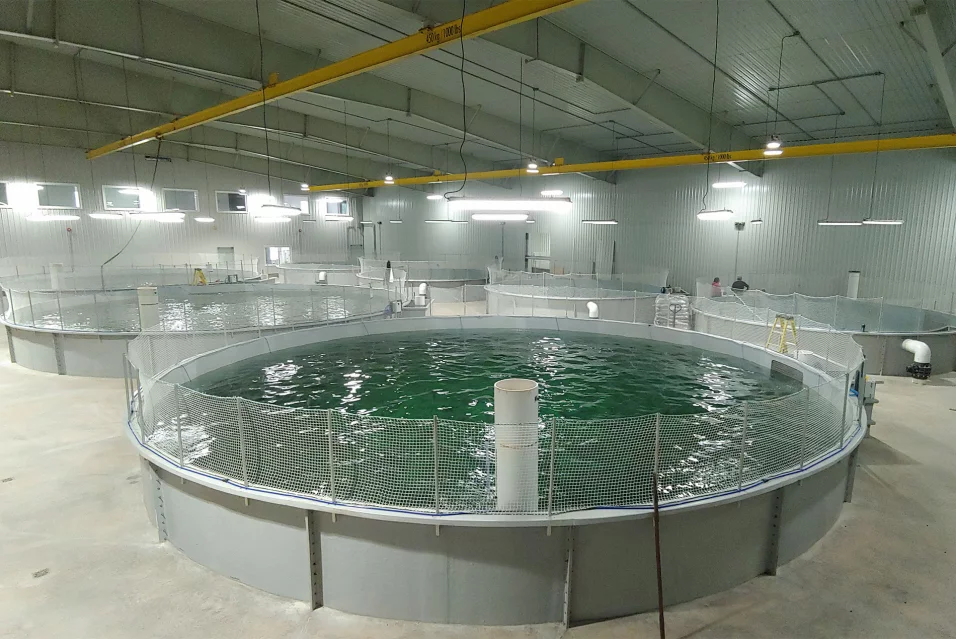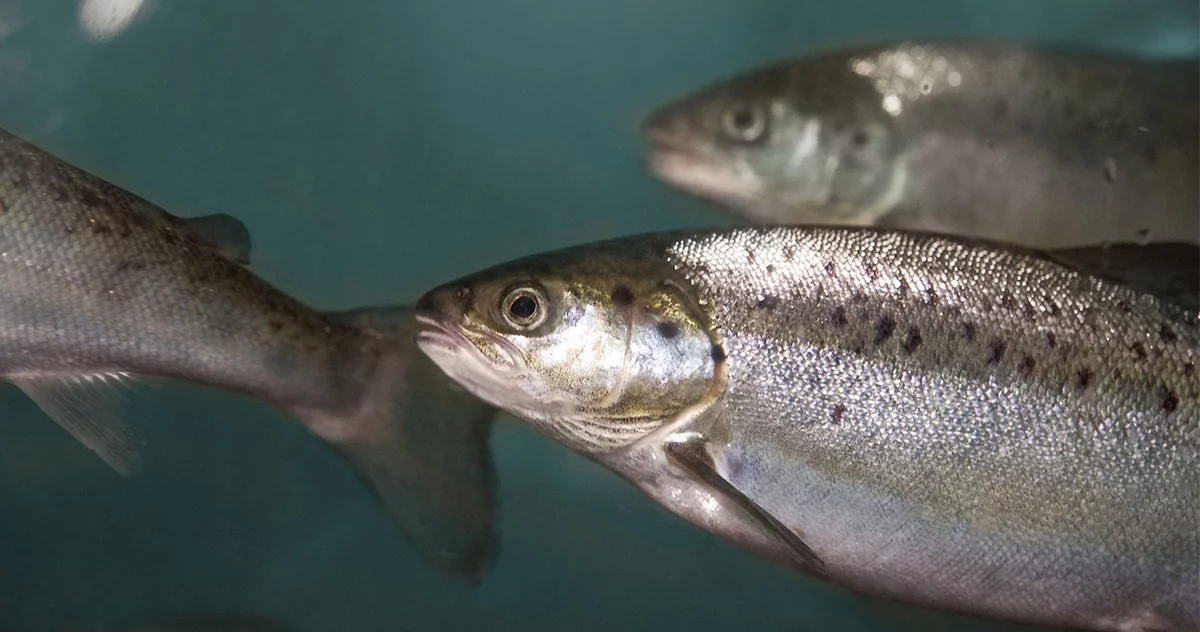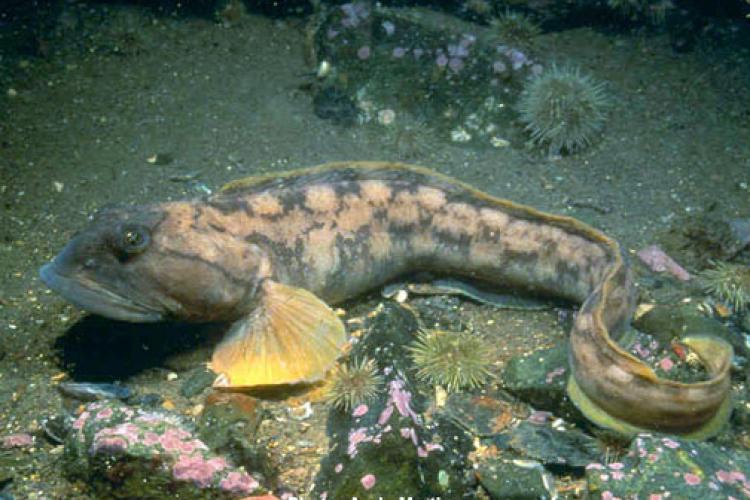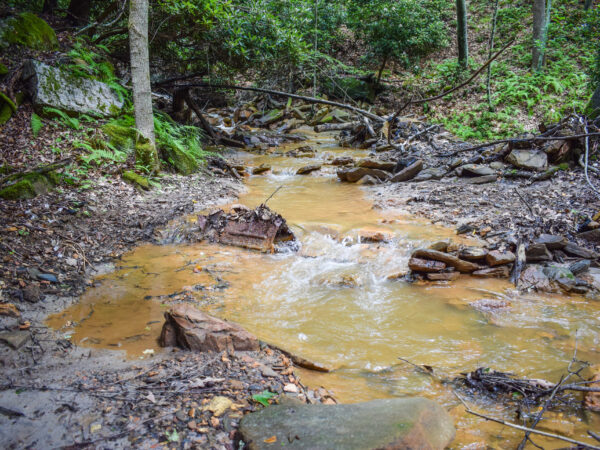
Despite overwhelming public opposition based on public comments received by the Ohio Department of Natural Resources, the agency approved a water withdrawal and consumptive use permit for Massachusetts-based Aquabounty on March 14.
The permit will allow operators to pull about 28 million gallons from the Michindoh Aquifer to fill tanks at its state-of-the-art Atlantic salmon rearing facility in Pioneer, Ohio. The plant, currently under construction, will subsequently pump about 4 million gallons a day thereafter.
The Michindoh is believed to cover all or parts of nine counties in Michigan, Indiana and Ohio, including all of Ohio’s Williams County. The sprawling underground water source covers about 2 million acres and currently provides clean, fresh water to more than a dozen municipalities and thousands of private residential wells.
According to the U.S. Environmental Protection Agency, the Michindoh is a source of drinking water to about 385,000 people. Water in the aquifer runs both vertically and horizontally, and it can be as shallow as near the surface to about 200 feet deep. It was created about 14,000 years ago by glacial deposits of sand and gravel.
Despite misgivings by residents in the areas which rely on the aquifer as a water source, Aquabounty officials say the modeling studies completed and included in a 600-plus page ODNR application indicate the Michindoh can sustain the new salmon farm, slated to produce about 10,000 metric tons of fish annually, and will suffer no negative environmental impacts.

This is what the new Aquabounty facility in Pioneer is expected to look like when completed. (Image courtesy of Aquabounty)
Aquabounty: Sustainable food, safe environmental plan
Sylvia Wulf, Aquabounty CEO, said after filling the tanks initially, water will recirculate about five days before being cleansed and discharged into the St. Joseph River.
“So on a daily basis we’re using about 4 million gallons. That’s why we say we re-circulate 99% of the water and it just keeps being used and cleaned,” she explained.
According to Wulf, the facility should be up and running by late 2023, with salmon ready for market in 2025.
“We’ve already started construction,” she said, going on to add that she’s not concerned about the possibility of aquifer depletion. “The aquifer is 15 miles long and 160 feet deep, so the modeling that we did was ultra, ultra conservative. It doesn’t help anybody if we don’t have water. It’s an agricultural area, not counting the people that count on the water, and our fish need it to survive, so I don’t think there’s any risk of that ever happening and our models would show the same thing.”

A few Aquabounty genetically engineered Atlantic salmon swim in their tanks. (Photo courtesy of Aquabounty)
Residents remain skeptical
The ODNR received more than 1,100 missives during a 30-day comment period earlier this year, overwhelmingly in opposition to the project. While opponents listed a variety of reasons, the main theme was water: What will happen to the Michindoh Aquifer and its water?
Liz Kirkwood, executive director of For Love of Water, a Traverse City-based water policy center, said every water diversion in the Great Lakes region matters.

Liz Kirkwood, For Love of Water executive director (Photo courtesy of For Love of Water)
“These are the types of quantities that raise alarm bells for all jurisdictions in the Great lakes Basin,” she said. “The Great Lakes Compact was really clear about directing states to monitor and evaluate these massive water withdrawals, because they have tremendous impact not only on individual aquifers but on the larger watersheds and ultimately the Great Lakes Basin itself.”
Kirkwood said issues of unintended consequences including chemicals, oxygen levels, sedimentation, nutrients and water levels, among others, need to be studied carefully before such projects are undertaken.
According to Kirkwood, while land-based aquaculture is a good thing, there are caveats – like the sustainability of the water source.
“The real problem as I understand it – and I’m not a scientist – is that we really have inadequate modeling and monitoring of the aquifers,” she said. “Groundwater is an invisible resource that must be prioritized in terms of water conservation and protection.”
Others are more blunt, like former Pioneer Village councilman Al Kwader, who recently left his leadership role after more than a decade. He said it’s been years of clashing between him and Ed Kidston, the village mayor.
Kidston owns Artesian of Pioneer, a water treatment services company. As an entrepreneur, he’s working to make use of the aquifer beneath Pioneer. Several years ago, Kidston proposed to pump Michindoh Aquifer water east to a Toledo suburb which was exploring a new municipal water source. That deal didn’t work out, but more recently the salmon farm deal has.
According to Kwader, not much was said about the Aquabounty deal until it happened.
“They kept it under hat,” he said. “They said something was going to happen, something big, but they never let out what it was going to be and what the situation for the water was going to be. Then after (Kidston) got a bunch of stuff passed there with the council, they got in a position where they had to let it out.”
Sherry Feming, with grassroots conservation organization Williams County Alliance, concurred with Kwader’s description of the initial secrecy around the project.
“The only thing they were told was whoever was coming was going to be a large user of electric,” she said. “They made it sound really good, that the village was going to benefit from the sale of electric.”
But according to Fleming, people in the area are mostly concerned about the aquifer beneath them.
“The sad part of this whole thing is the people who are so connected to this aquifer for our well-being, we have no say in it. That’s why a couple years ago we tried to do that county charter with Rights of Nature – that would have allowed people here to kind of be guardians of the aquifer.”
The Williams County Alliance’ run at Rights of Nature protection for Williams County ultimately failed. The Rights of Nature movement, which has gained traction in some parts of the world, hasn’t in Ohio. Under Rights of Nature doctrine, an ecosystem can be afforded the same legal standing in court as a citizen. Shortly after WCA petitioned the local elections board for a ballot measure, the Ohio Supreme Court struck it down as unconstitutional.
Can the Michindoh support the Aquabounty operation?
Kidston, who purchased at least a portion of land subsequently sold to Aquabounty for the new
site, said yes.
“Even the U.S. Geological Survey says there’s a renewable water supply in this area of 200 million gallons a day,” he explained. “I don’t have anything to confirm the study nor deny, however it’s far enough away from Aquabounty’s needs of about 5 million gallons a day. So if USGS is only 25% correct let’s say, then the water supply in this area only renews at 50 million gallons a day it’s still 10 times what this outfit needs. There’s plenty of water here.”
He described those opposed to the new salmon farm as protesters and not water experts.
“I’ve been in this business for over four decades,” he said. “What they’re telling people is just totally untrue, that when it’s gone it’s gone and that couldn’t be further from the truth.”
Howard Reeves, a USGS research hydrologist, described the aquifer as a giant sponge with water moving through the sand, gravel and clay. And in this area, he said, there’s historically been a decent amount of water moving through the system.
“Most of the water is coming from rainfall that infiltrates through root zones and most of it discharges through streams, rivers, wetlands,” he said. “That’s why rivers flow in summer when it hasn’t rained for a while, because groundwater is feeding those rivers.”
While recent national news stories feature wells drying up and aquifers dwindling, those are mostly in the arid West, Reeves said, where much less water enters aquifer systems. Wells running dry in this area are fairly rare, he said. He did mention a situation in the Lansing area in the 1960s where municipalities had water troubles but it was nowhere as extensive as what’s happening in the West.
Among ODNR requirements for the Aquabounty withdrawal permit is the duty to remedy water level problems for existing wells. Issues with two local wells close to the new site, Kidston said, have already been addressed.
“Aquabounty’s already replaced two which they knew ahead of time, from science, they were going to affect. Both were very old farm wells not more than 20 or 30 feet deep,” he said. “They drilled new wells, 130 feet deep, and they’ll never run out of water.”
Will agricultural field tiles prevent aquifer recharge?
Williams County resident Gary Crider said some people are concerned about the effect of the large, continuous water withdrawals in conjunction with agricultural field tile drainage. Such drainage systems are the rule in northwest Ohio fields rather than the exception. They allow farmers to drain water from fields to allow quicker access during wetter periods. That water usually ends up draining into surface ditches then to streams.
“You drain the water off so fast it doesn’t have a chance to get down through to the aquifer. With all the tiling in Williams and Defiance counties, which are all agricultural, I don’t think the issue has been studied enough,” Crider said. “The irritating thing to me is they’re pumping it out of the aquifer and back into the river to get the coolness of the water. The state could just tell them to put in a refrigeration system.”
But Reeves said the short windows of time which fields hold standing water likely mitigates the issue.
“What may have come up on fields in six weeks or some longer amount of time comes off in a couple days, so it may be more a timing issue, rather than ‘We’ve moved this huge volume that never had a chance to hit the recharge,’” he said.
A 2018 study by the Minnesota Groundwater Association concluded there is definitely a knowledge gap on the topic of agricultural drainage and glacial aquifers: “The size of the water balance shift from drained water that would have evapotranspired or run off the land to drained water that would recharge underlying aquifers has been poorly characterized.”
Special patented salmon: free of antibiotics and profits
Aquabounty is currently raising Atlantic salmon on two much smaller farms, one in Albany, Indiana, and another on Prince Edward Island in Canada. The fish are genetically engineered to grow larger and faster than natural Atlantic salmon. This was accomplished by borrowing genetic materials from chinook salmon and ocean pout, some three decades ago by scientists searching for a way to improve aquaculture.

An ocean pout is one of the fish whose genetic material helps Aquabounty’s patented Atlantic salmon grow. (Photo courtesy of the U.S. Fish & Wildlife Service)
The genetic modifications allow the farmed salmon to produce growth hormones year-round, pushing the fish to grow twice the size of traditional farmed fish while consuming 25% less food. And in less time. The Aquabounty salmon can reach market size in as little as 18 months, while traditional farmed salmon take at least 28 months.
While the technology to create such a fish has been around for decades, getting government approval for human consumption has taken years as well as approving other aspects of stocking, raising and selling the fish.
Wulf said knowing how large the fish will grow, when they will reach harvest size and how much they will eat in that time is a good thing in the food production business.
“If we can in fact control our costs and compete at a commodity level, we have created something that will create a larger market for salmon because more people will be able to afford it and so that’s always a part of our strategy,” she said. “Because of the way we farm we have control over our input, and so we can actually enter into longer-term agreements with stability with retailers or large restaurant chains.”
Despite the fact that Aquabounty successfully raised, harvested and sold its first 84 tons of salmon in 2021, the business model remains to be proven. That’s because genetically engineered salmon haven’t exactly been embraced by major retailers like Kroger, Costco, Walmart and Whole Foods, who declared their intention not to carry it. New U.S. Food and Drug Administration rules require Aquabounty salmon to be labeled as “bioengineered” when sold retail, though not in food service settings. That leaves restaurants and institutional customers as a primary distribution channel.
“That was always going to be a primary market for us,” Wulf said. “Retail is also a market opportunity for us. What we’ve seen is that consumer sentiment and perception around GMO has been shifting to positive.”
Net losses for Aquabounty were recorded at $22.3 million in 2021 and $16.4 million in 2020.
Wulf said that as consumers’ opinions shift, so will retailers’.
Whether residents change their minds about the new farm and its use of the Michindoh Aquifer – and if the water lasts – remains to be seen.
Catch more news at Great Lakes Now:
AI technology could be used to monitor invaders in the Great Lakes
I Speak for the Fish: Inside a trout feeding frenzy
Featured image: Inside one of Aquabounty’s existing facilities (Photo courtesy of Aquabounty)
1 Comment
-
Hi James. Great story! Very informative.
Thanks




